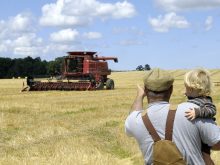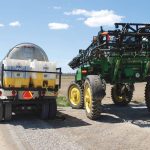AS VARIOUS governments or their agencies eliminate or charge more for
services, the Statistics Canada census of agriculture serves as a
warning signal: farmers have reached the limit on expenses.
The census shows that in the past five years, western Canadian farmers’
profit margins have been squeezed unmercifully. Commodity prices
dropped, expenses rose and the ratio of operating expenses to gross
farm receipts grows more uncomfortable.
This has influenced the most dramatic decrease in farmer numbers in any
Read Also

Crop profitability looks grim in new outlook
With grain prices depressed, returns per acre are looking dismal on all the major crops with some significantly worse than others.
five-year period since 1966-71.
In 2000, on average, “farmers spent 87 cents on operating expenses (not
counting depreciation) for every dollar received in gross farm
receipts,” reported Statistics Canada. That was up from 83 cents in
1995.
A breakdown by province is more revealing. Manitoba followed the
national average, rising to 87 cents from 83 cents. Alberta rose to 90
cents from 84 cents and British Columbia climbed to 91 cents from 90
cents. The biggest change was in Saskatchewan, where it rose to 85
cents from 77 cents.
Why such a squeeze?
In the last five years, Saskatchewan farmers have experienced a
whopping 27.2 percent drop in prices for their products, but the price
for inputs such as fertilizer and chemicals rose 8.5 percent.
Manitoba’s commodity prices dropped 11.9 percent and expenses rose nine
percent. Alberta’s prices fell seven percent and expenses rose 11.9
percent, while B.C. prices rose 7.8 percent but were offset by a 9.8
percent increase in expenses.
The Prime Minister’s Caucus Task Force on Future Opportunities in
Farming got this message several weeks ago. Its interim report said
“one of the biggest complaints we heard from farmers was the fact that
their costs have increased more quickly than have their profits. The
biggest concern in this area was the increased cost recovery fees
charged by government.”
The task force recommended that the government examine the implications
of cost-sharing services under the Pest Management Regulatory Agency
and the Canadian Food Inspection Agency. It suggested freezing or
reducing fees if they are higher than what farmers pay in other
countries or sectors of the economy.
Yet provincial and federal governments appear set to implement even
greater cost recovery policies. In their drive to encourage value-added
initiatives, governments are removing primary services to agriculture.
With margins so tight, farmers need the best advice possible on
disease, pests, weather and production. If they must pay more for
public services or seek information from private sources, that dime or
two of profit from every dollar may shrink into nickel territory.














